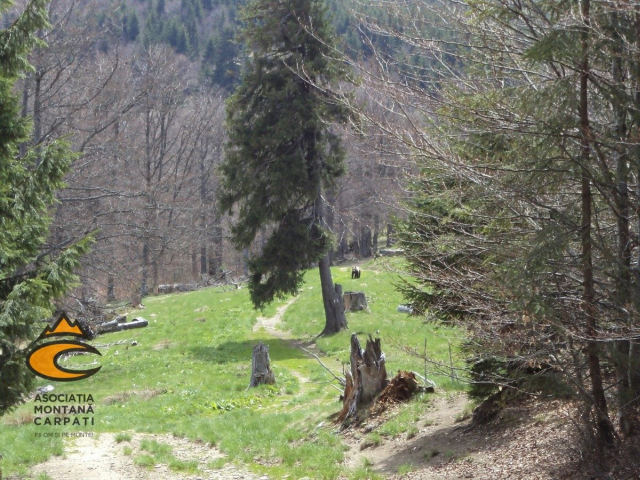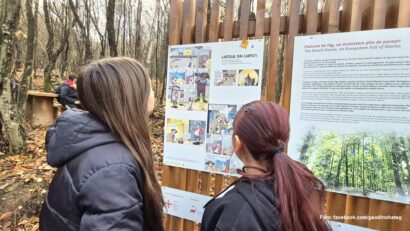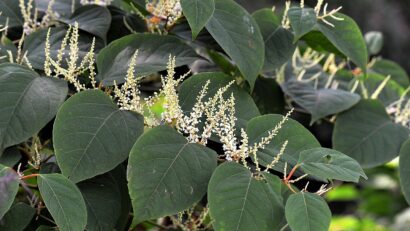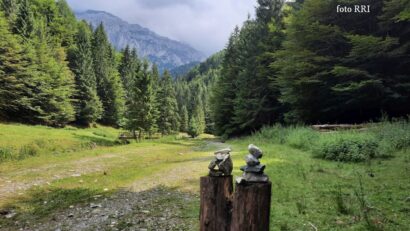Erosion in the Carpathian Mountains
Soil erosion is becoming an urgent environmental problem in the Carpathian Mountains

Eugen Coroianu, 23.11.2023, 18:18
Soil erosion is becoming an urgent environmental problem in the Carpathian Mountains, which is already compromising biodiversity and natural habitats, points out Aritina Haliuc, postdoctoral researcher at the University of Bordeaux, France. She refers to two recently published studies that analyzed soil erosion in two mountain basins in the Carpathians: Lacul Roșu (Red Lake) and Lacul Ighiel. Specifically, they measured how much sediment reaches the bottom of these lakes over a period of a century, and what the connection is with the climate, and the presence of people. Both researches showed that erosion accelerates with the intensification of human activities. In addition to the effects at the ecosystem level, especially for Red Lake, the increased sediment supply also led to the accelerated clogging of the water, a process that affects the lifespan of the lake. What exactly is erosion? Vlad Zamfira, from the Infoclima website, which published the material we are referring to, tells us:
For the last 100 years, we have noticed, in mountain basins, that erosion is accelerating with the intensification of human activities, and namely cutting down trees and overgrazing. In the Carpathians, the conversion of natural ecosystems to pastures means fewer plants, therefore unstable soil, which is susceptible to erosion, leading to landscape degradation. In the current context of climate change, where temperature fluctuations, but also droughts and floods contribute, soil erosion is accelerating. Projections show that the process will increase by 13% to over 22% in the European Union by 2050. But what is erosion? The relief forms: mountains, hills, plains, valleys which we observe today, are the result of the erosion processes that polished the land over time. Erosion is the geological process by which the soil is broken down, detached and transported by the forces of nature, such as water, ice, or wind. There are two main types of erosion, namely chemical and physical. Chemical erosion occurs when the chemical composition of a rock changes, while physical erosion is what breaks down rocks while their chemical composition remains the same. For example, landslides or mudflows are caused by physical erosion. The high regions of the Carpathians are prone to soil erosion due to both the rugged relief and heavy rainfall. Deforestation, overgrazing, and wildfires lead to soil degradation, loss of biodiversity and fertility, and increased risk of landslides and flooding downstream in lower areas.
Through erosion, rocks become smaller, smoother, and easier to transport. Both water and ice contribute to physical erosion, because their movement forces rocks to break away or collide. Also, the wind is a powerful agent of erosion, transporting dust, sand, ash and other remains over long distances, explains Aritina Haliuc. Erosion depends on climate, topography, vegetation, tectonic activity, and human actions. The climate, through precipitation, wind, and the freeze-thaw process, causes the erosion of the landscape. Vegetation can slow the impact of erosion. The roots of trees, shrubs, and other plants stabilize the soil and prevent sediment transport and can limit the impact of landslides. In the Carpathian highlands, where the vegetation cover is thin and discontinuous, even a low erosion rate leads to irreversible soil loss, causing landscape degradation and the loss of natural ecosystem benefits. On the other hand, the Romanian Carpathians (and not only) are susceptible to wildfires. They can have devastating effects on mountain ecosystems, especially fragile ones, and can lead to the loss of natural habitats, the destruction of biodiversity, and even threaten the safety of communities near the affected areas. Moreover, fires, especially in high areas, increase the risk of natural hazards such as landslides, floods and mudslides. In the Carpathians, as the climate models show us, the increase in precipitation in a short period of time, but also the increase in temperatures, and the longer warm seasons as a result of climate change should worry us, concludes the Romanian researcher from the University of Bordeaux.
Both at the national and international level, there are a number of initiatives and strategies aimed at limiting and preventing soil erosion. For example, the Soil Conservation Law – which imposes a series of measures for the proper use of land, reduction of erosion and prevention of degradation. There is also the National Rural Development Program – a grant program from the EU that supports the implementation of sustainable agricultural practices. At the European level, there is also the Union’s soil strategy, which aims to monitor and promote their sustainable management. Finally, at the regional level, the Carpathian Convention, an international treaty adopted in 2003 by Poland, Slovakia, Ukraine, Hungary, Romania and the Czech Republic, aims to promote sustainable development and environmental protection in the Carpathian mountains. There are also foundations and local organizations that fight for the protection of the natural fund by limiting deforestation, establishing natural parks, monitoring and evaluating the affected areas, and educating the local population.






























